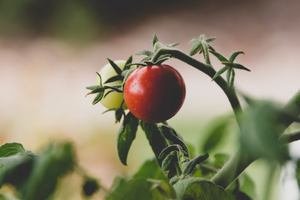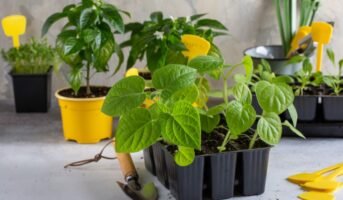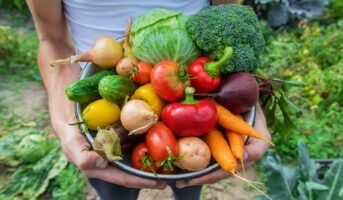Want to start your kitchen garden but don’t know which vegetable or fruit to start from? Well, the first plant that should be considered is the Tomato plant. Well, keeping aside the varieties of sizes, colours and flavours of the tomatoes, growing a tomato plant is a sort of training of the masterclass.
Check how to grow and maintain a potato plant
Tomato prices surge
The prices of tomato are seeing an increase day by day with a kg of tomatoes costing around Rs 160 per kg in Mumbai and most parts of India. The reason cited for this unexpected price rice is extreme heat, delayed rains in parts of the country owing to which production has suffered.
The price of tomatoes are to expected to rise further and will take around two months to normalise.
Tomatoes in India are grown in states like Andhra Pradesh, Bihar, Chhattisgarh, Gujarat, Madhya Pradesh, Maharashtra, Haryana, Karnataka, Odisha, West Bengal, Telangana and Tamil Nadu. Media reports suggest that according to the ministry of agriculture, the above mentioned states contribute to 91% of the total production of Tomato in the country.
Tomato plant: Quick facts
| Botanical name | Solanum lycopersicum |
| Common name | Tomato |
| Kingdom | Plantae |
| Order | Solanales |
| Family | Solanaceae |
| Genus | Solanum |
| Life cycle | Annual or short-lived perennial |
| Mature size | Around 3-6 feet tall |
| Cultivation | China, India, USA. Turkey, etc. |
See also: All about Sweet Potato Plant
Tomato plant: Physical description
Tomato plants generally grow in the branched form. It can spread between 100–180 cm. During the fruiting season, some forms of the plant might start a trail, while others are more compact and upright. The tomato plant leaves are a bit hairy, odorous, pinnately compound, and up to 45 cm long. The plant grows five-petaled flowers of a yellow colour of about 2 cm. The fruits are berries with a diameter of about 1.5-7.5 cm and usually exist in the colour of red, scarlet, or yellow, along with a few varieties of green and purple. From almost spherical to oval and elongated to pear-shaped, the berries vary in shape.

Source: Pinterest
Tomato plant: How to grow?
Tomatoes run on warmth. So, it is ideal to grow the tomato plant in late spring and early summer. To have a head start in growing, you can plant starter plants instead of seeds. A prime, sunny spot is a very important aspect of growing tomatoes. Tomatoes require at least 6 to 8 hours of sun to bring out their best flavours, so keeping the plant in a sunny spot will help you out enormously.
As already mentioned, the plants tend to form trails, so ensure that each plant has enough room to grow. When the spoil pH ranges between 6.2-6.8 (slightly acidic), then the plant can easily soak up the nutrients well. They require regular access to both main and minor plant nutrients.
You should bury two-thirds of the stem while planting to grow a really strong tomato plant. Your plant will become stronger and better able to find water in a drought by taking this crucial step, which will enable the plant to sprout roots along the buried stem. Water the seedlings immediately after planting the plant to help settle them in.
Protect your tomato plants from weeds by covering the ground with 2 to 4 inches of mulch. It not only minimises weed growth but also keeps the soil evenly moist. Mulch made of straw and shredded leaves is great for tomatoes. Regularly watering the plant is very important for the plant’s growth. Aim for at least an inch of moisture each week (from rain or irrigation), with more during the summer. Keep on checking the soil, and if it seems too dry, then it’s time to water.

Source: Pinterest
Tomato plant: Care tips
We have discussed the various details that are required for tomato plant growth. But here are some of the important maintenance tips that are important to take good care of your juicy tomato plants.
Tomato plant: Watering
- Watering the plants in the early morning helps the plants to retain moisture and make it through the hot day.
- Water generously the first few days that the tomato seedlings or transplants are in the ground.
- Avoid overhead watering and afternoon watering. Water at the base/soil level of a plant to avoid splashing water on the leaves (which invites disease).
- During periods of drought, you can protect the plants and their moisture by adding some flat rocks placed next to each plant on top of the soil of the plant. The rocks prevent water from evaporating from the soil.
Tomato plant: Fertilising
- You should have added the compost into the soil while planting the seeds of saplings.
- You should continue to fertilise the plants, and it should be in the frequency of about every 3 to 4 weeks until frost.
- You should avoid using fast-release fertilisers and high-nitrogen fertilisers, as they release too much nitrogen. This results in bushier leaves but reduces the plant’s capacity to bear flowers and fruits.
- The plants are usually susceptible to many pests and diseases. They can be bacterial wi, etc. lt, early blight, mosaic virus, Fusarium wilt, nematodes, and tomato hornworms. These problems can be controlled with the use of fungicides and pesticides and the planting of resistant varieties.
Tomato plant: Pruning
Tomato plants can be trimmed to focus energy on developing fruit rather than foliage; however, it’s not required. By enhancing airflow and light, pruning can also aid in the prevention of pests and illnesses. You can take the actions listed below:
- Remove suckers that form between the main stem and branches since they won’t bear many, if any, fruits.
- To avoid plant shock, remove suckers when they are little (less than the width of a pencil).
- Lower branches should be pruned to avoid water splashing on the leaves, which might encourage the growth of fungi.
- To be trained up a stake or string trellis, indeterminate vining kinds can be cut down to a single leader.
Tomato plant: Pests
Aphids, cutworms, blister beetles, tomato fruitworms, flea beetles, stink bugs, leafhoppers, spider mites, nematodes, slugs and snails, tomato hornworms, and whiteflies are some of the most prevalent pests.
Tomato plant: Diseases
The majority of illnesses are fungus-related and are brought on by inadequate air circulation, excessive humidity, and inappropriate watering techniques. Early and late blight, grey leaf spot, septoria leaf spot, anthracnose, bacterial wilt, leaf mould, fusarium wilt, tobacco mosaic virus, damping-off disease, tomato yellow leaf curl virus, and tomato spotted wilt virus are among the diseases.
Tomato plant: Problems
Other issues include fruit cracking, leaf roll, catfacing, poor fruit set, flower drop, and blossom end rot.
How to grow tomato plants in pots?
It’s quite simple to grow tomato plants in containers but it takes a little more effort than those planted in gardens. Here’s how to grow tomatoes in pots:
Plant a bush or patio tomato variety
Small tomato plants, called bush or patio varieties, grow best in containers. These pot-friendly varieties of tomato plants usually grow up to 1-3 feet in height before producing fruits.
Pick a big pot
Tomatoes have a wide and large root system, creating the need for a big pot to give your plant’s roots the room to grow. The ideal pot is at least 20 inches wide and can hold at least 5 gallons of soil.
Ensure proper drainage
Tomatoes can grow in clay, stone, plastic, and metal pots as long as the pot has adequate drainage. A pot with drainage holes allows excess water to escape.
Add potting mix
Regular soil may not drain fast enough for growing tomato plants. It’s a better course of action to use a lightweight and easy to use potting mix that is designed to offer great drainage.
Provide nutrients
Tomato plants need plenty of nutrients. This can be achieved by providing your tomato plants with a slow-release fertiliser mixed into the potting mix. Fertilise the plants again after 4-6 weeks of planting. You can also use an organic fertiliser such as kelp meal, greensand, or fish emulsion.
Choose a spot with plenty of sunlight
Make sure to choose a sunny spot for your tomato plants as these plants need at least 8 hours of direct sunlight every day for best fruiting and growth.
Water daily
Tomatoes require plenty of water, particularly during the growing phase. So, make sure to water them at least once every day. The best time to water tomato plants is during the morning. You can water them twice, once in the morning and once in the late afternoon, during particularly windy or hot days.
Provide support
Tomato fruits grow heavy as they ripen, which can lead to the bending or breakage of stems. For this reason, it’s vital to provide your plants with support through a stake or trellis.
Tomato plant: Benefits
Encourages heart health
Recently, there have been more deaths from heart disease and stroke. Clinical research on the health benefits of tomatoes found that they lower oxidative stress and inflammatory indicators. By safeguarding the inner layers of the blood arteries, they may also lower the risk of blood clotting.
Promotes skin health
Lycopene, which shields your skin from sunburns, is mostly found in tomatoes. Since it cannot be applied superficially, it cannot serve as a replacement for sunscreen. However, by affecting your cells, it aids inside.
Potentially protective against cancer
Studies on tomatoes and meals made with tomatoes have revealed that they may lower the incidence of stomach, prostate, and lung cancer. Tomatoes have a lot of carotenoids, which may shield women from breast cancer.
Could be good for eye health
To protect your eyes from the blue light emitted by digital devices like smartphones and laptops, tomatoes contain lutein and zeaxanthin. They may help prevent eye fatigue and reduce headaches brought on by eyestrain.
FAQs
When should tomatoes be planted?
The tomato plants should be planted during the late March and early April phases when you have an outdoor garden. One thing is to keep in mind that the tomato plants are destroyed during frost whether they have to be protected or planted in a place where they can get lots and lots of sunlight.
Are used coffee grounds good for tomato plants?
Coffee grounds act like natural fertilisers as they are rich in nitrogen. They are pest deterrents and are an ideal choice to use on tomato plants to improve their growth.
What symptoms of overwatering tomato plants are there?
It is very important to water the tomato plants in the right quantity. Overwatering might result in cracked fruits and blisters or bumps in the lower part of the leaves. The roots of the plant might start to drown, followed by rotting and death of the roots because of overwatering.
| Got any questions or point of view on our article? We would love to hear from you. Write to our Editor-in-Chief Jhumur Ghosh at [email protected] |
Housing News Desk is the news desk of leading online real estate portal, Housing.com. Housing News Desk focuses on a variety of topics such as real estate laws, taxes, current news, property trends, home loans, rentals, décor, green homes, home improvement, etc. The main objective of the news desk, is to cover the real estate sector from the perspective of providing information that is useful to the end-user.
Facebook: https://www.facebook.com/housing.com/
Twitter: https://twitter.com/Housing
Email: [email protected]











